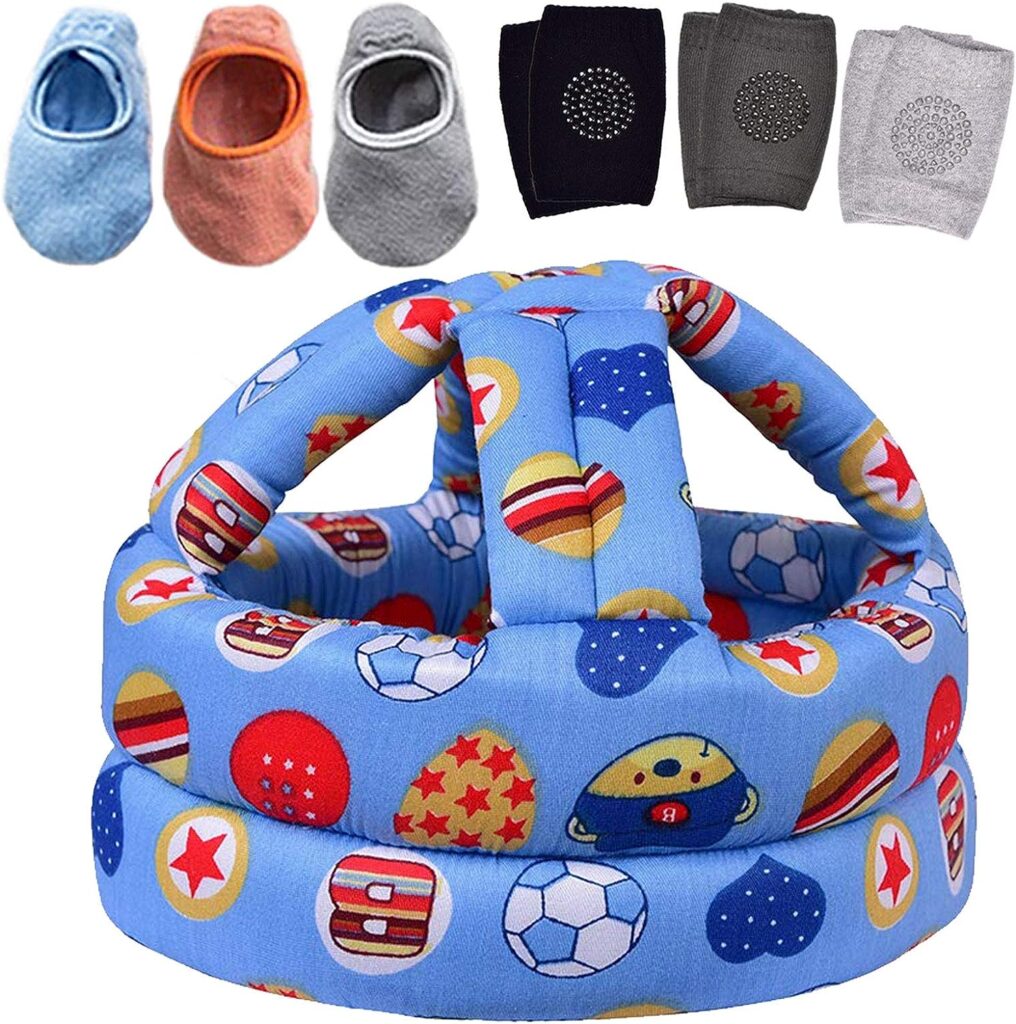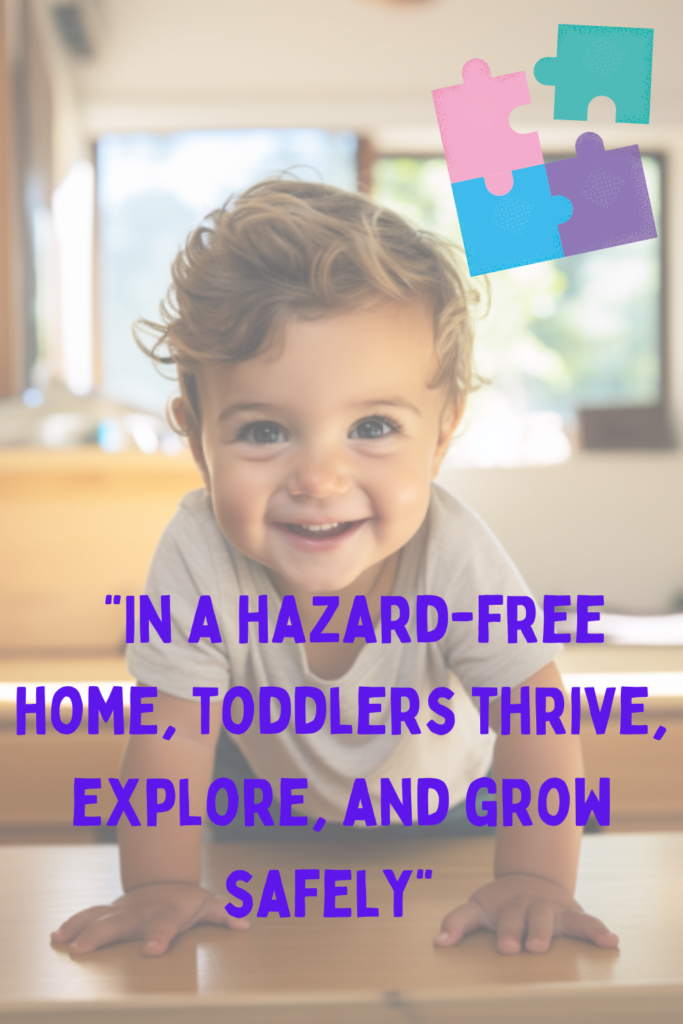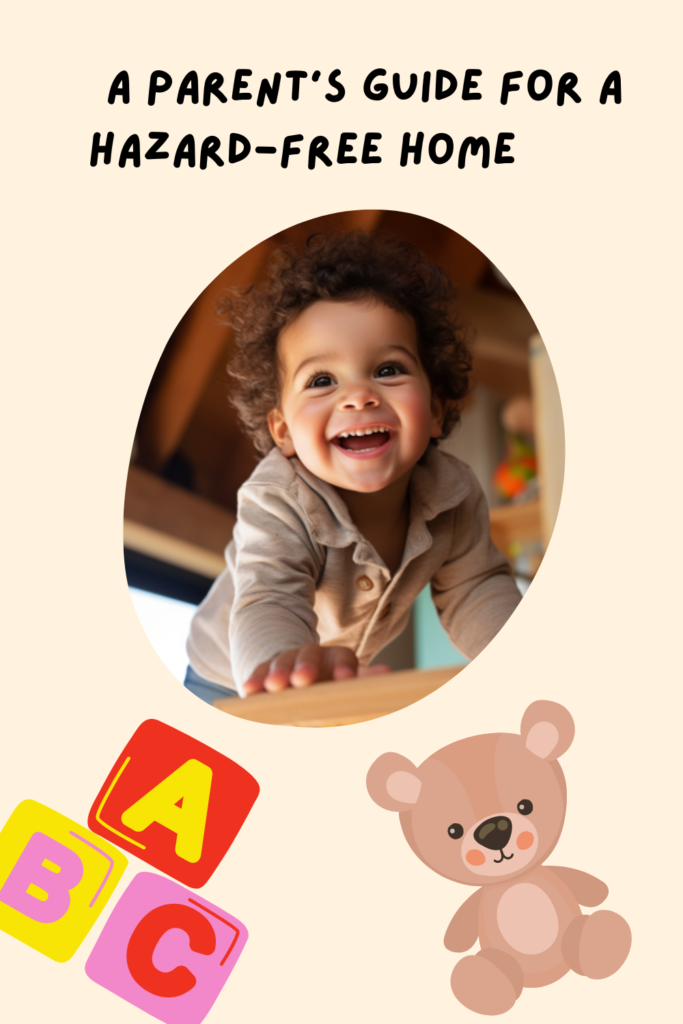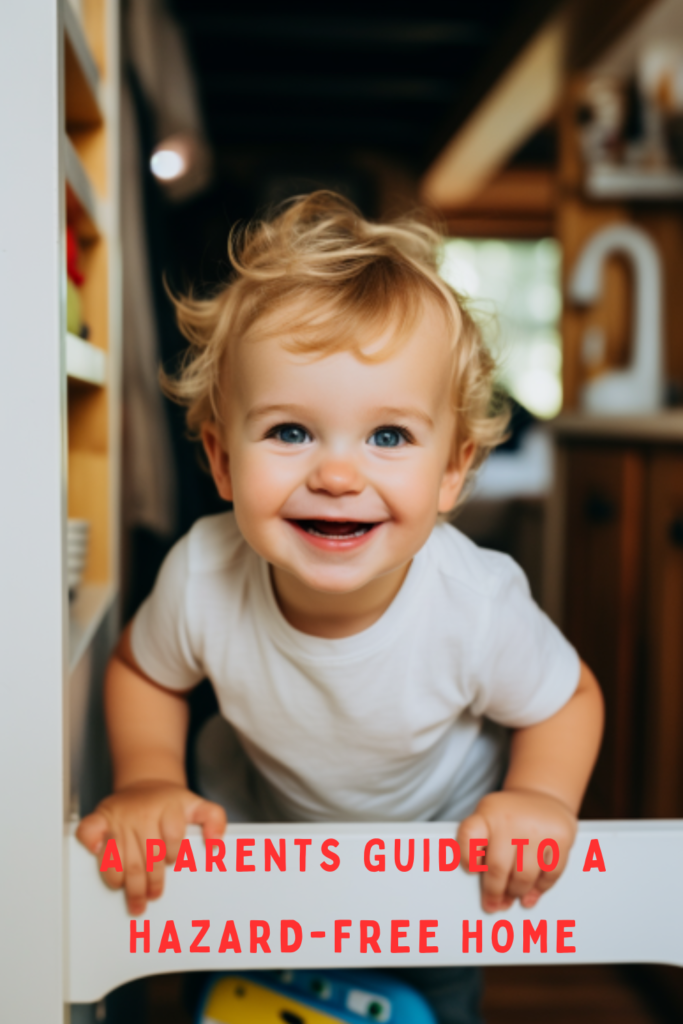A Parent’s Guide for a Hazard-Free Home
This Parent’s Guide for a Hazard-Free Home is an important first step for keeping a baby safe when they are learning to walk, as this is a stage when they are exploring their environment and are prone to accidents.
A mother has done everything she could to keep the baby safe while in her belly, pre-natal vitamins etc, so now it’s time to keep it safe on the outside in the home.
Baby’s First Steps to Safety
Hazard-Free Home Tips:
- Childproof Your Home: Before your baby starts walking, thoroughly childproof your home. This includes securing cabinets and drawers with childproof locks, covering electrical outlets, and securing heavy or sharp objects that might be within their reach.
- Use Safety Gates: Install safety gates at the top and bottom of staircases to prevent falls. Also, use gates to block off rooms or areas that are not babyproofed.
- Remove Trip Hazards: Keep floors clear of toys, loose rugs, and other items that your baby could trip over while walking.
- Provide a Safe Play Area: Create a safe play area for your baby with soft flooring, such as foam mats or rugs, to cushion falls.
- Supervise Closely: Always keep a close eye on your baby when they are learning to walk. Be within arm’s reach to provide support if they stumble.
- Encourage Barefoot Walking: Allow your baby to walk barefoot or with soft-soled shoes indoors. This helps them develop balance and coordination.
- Use Proper Footwear Outdoors: When your baby starts walking outside, provide them with shoes that are appropriate for their age and the terrain.
- Install Safety Latches: Use safety latches on cabinets and drawers to prevent your baby from accessing hazardous substances or objects.
- Secure Furniture: Anchor heavy furniture, like bookshelves and dressers, to the wall to prevent them from toppling over if your baby tries to climb on them.
- Cover Sharp Corners and Edges: Use corner guards to cover sharp corners on furniture and countertops.
- Be Mindful of Pets: If you have pets, make sure they are comfortable around your baby and always supervise their interactions.
- Keep Small Objects Out of Reach: Keep small objects, such as coins, buttons, and small toys, out of your baby’s reach to prevent choking hazards.
- Teach Safe Behavior: As your baby gets older, start teaching them about safety rules, such as not running indoors and being careful on stairs.
- Use Safety Straps: Use safety straps to secure your baby in high chairs, strollers, and changing tables to prevent falls.
- Learn Basic First Aid: Familiarize yourself with basic first aid techniques in case of minor accidents. Having a well-stocked first aid kit is also advisable.
- Prevent Head Injury: Wearing a protective helmet during the early stages of walking can help prevent head injuries. Using nonslip socks and/or booties prevents slips.

What If Baby Gets Injured, What To Do?

If a baby falls and gets injured, it’s essential to remain calm and take immediate steps to assess and address their injuries. A Hazard-Free Home can prevent injuries.
- Stay Calm: Try to stay as calm as possible. Your baby will pick up on your emotions, and staying composed will help reassure them.
- Assess: Look for any immediate sign of injury such as bleeding, deformity, or swelling.
- Check for Responsiveness: If the baby is unconscious, or having trouble breathing, call 911 (or your local emergency number) immediately.
- Keep the Baby Still: To prevent further injury keep the baby still and do not move them, especially if you suspect a neck or back injury.
- Calm and Comfort: Comfort your baby by speaking soothingly and gently stroking them. Your presence and soothing words can be reassuring.
- Control Bleeding: Apply gentle pressure to the wound and do not use adhesive bandages as they can be a choking hazard. Pat the area with a clean cloth or sterile gauze.
- Ice: For swelling, you can apply a cold compress (wrapped in a cloth) to the injured area for 15-20 minutes. To prevent frostbite use a cloth between ice and skin.
- Seek Medical Attention: If you notice any of the following signs, it’s important to contact a healthcare professional ASAP.
- Uncontrolled bleeding
- Loss of consciousness or changes in alertness
- Vomiting
- Signs of a possible head injury (e.g., persistent crying, vomiting, unequal pupil size, loss of consciousness)
- Seizures
- Difficulty breathing
- Swelling or deformity of bones or joints
- Inability to move limbs
- Document: It can be helpful to write down the details of the fall, such as when and how it occurred, and any symptoms or changes in your baby’s behavior afterward. This information may be useful for healthcare professionals.
- Prevent Future Falls: After the incident, take steps to prevent future falls by babyproofing your home even more thoroughly and closely supervising your baby, especially as they continue to develop their motor skills.
Top 20 Safty Items For A Baby Safe Home
- Safety Gates: Safety gates are used to block off stairs, hallways, or rooms to prevent your baby from accessing potentially dangerous areas.
- Outlet Covers: These electrical outlet covers prevent babies from inserting objects or fingers, reducing the risk of electrical accidents.
- Cabinet and Drawer Locks: These locks prevent babies from opening cabinets and drawers that may contain harmful chemicals, sharp objects, or other hazards.
- Corner and Edge Protectors: Soft foam or rubber protectors are placed on sharp corners and edges of furniture to prevent injuries from bumps and falls.
- Baby Monitors: Audio and video baby monitors allow you to keep an eye on your baby while they sleep or play in another room.
- Door Stopper Guards: These door guards prevent doors from slamming shut, reducing the risk of fingers getting caught.
- Safety Straps and Latches: These secure items like flat-screen TVs, bookshelves, and toilets to prevent them from tipping over.
- Childproofing Locks for Appliances: Locks for ovens, refrigerators, and other appliances prevent access to potentially dangerous areas.
- Window Guards: These window guards are used to prevent falls from open windows. Make sure they are designed to allow easy escape in case of an emergency.
- Car Seat: A properly installed rear-facing car seat is essential for the safety of infants and young children when traveling in a vehicle.
- Staircase Banister Guards: These Stair Gates prevent children from squeezing through balusters and falling down stairs.
- Baby-Proofing Kits: These kits often include a variety of safety items like corner protectors, outlet covers, cabinet locks, and more.
- Baby Safety Locks for Toilets: These locks prevent babies from opening toilet lids or reaching into the toilet bowl.
- Cord Shorteners: These cord shorteners are used to secure long cords from blinds or curtains, reducing the risk of strangulation.
- Furniture Anchors: These secure heavy furniture like dressers and bookshelves to the wall, preventing tip-overs.
- Baby Gates for Fireplace: These gates are designed to create a barrier around a fireplace to prevent burns and accidents.
- Bathtub Thermometer: A thermometer helps you ensure that bathwater is at a safe temperature for your baby.
- Baby Safety Locks for Sliding Doors and Windows: These door locks prevent sliding doors and windows from being opened by children.
- Baby Knobs Locks: These knob locks are specifically designed for cabinets and drawers with knob-style handles.
- Anti-Slip Bath Mats: These mats help prevent slipping in the bathtub when your baby starts sitting or standing.
Falls from windows and broken screens are a significant cause of injuries in children, and they can result in a range of injuries, from minor bruises to more severe injuries, including fractures, head injuries, and even fatalities.
Why Is It Important For A Parent To Stay Healthy?
It is important for parents to manage and reduce stress for several reasons. When parents are stressed it can affect their ability to parent effectively. It’s vital to be a good role model to your children.
Keeping your Emotional well-being in check by reducing factors that may prevent a nurturing environment. Did you know coloring books can help with stress and anxiety?
High-stress levels can lead to distraction and decreased vigilance, which may compromise safety, especially when it comes to child safety. Being more relaxed and focused can help parents ensure their children’s safety.







Very good information, thank you for sharing it. ☺️
You have compiled a very useful list here. Thank you.